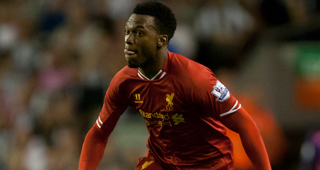Here in the states, no move symbolized the 2014 World Cup better than Landon Donovan’s exclusion from the national team. His career was a gateway for many American soccer fans – into the National Team, into the MLS, into the Premier League and beyond. There were 10 teams in the MLS when Donovan made his World Cup debut in 2002. The league will more than double its size starting next season. Donovan was at the center of almost every important game, discussion, and moment during that time both domestically and internationally during the next 12 years, capped off by his goal against Algeria in South Africa 2010. He was the national team’s human bat signal. So what now?
There’s more questions than answers when looking at the 32 rosters for this summer’s World Cup, starting with that existential void in attack. Mexico’s second leading goalscorer Cuauhtemoc Blanco retired from international play after playing in three World Cups (at least he got his goodbye on the field). And while Messi, Ronaldo, Ribery, Robben, and Suarez (if he plays) are holdovers from South Africa, Brazil’s hopes rest on Neymar, playing in his first World Cup. Look further at attackers who made the 2010 tournament their own - Diego Forlan, Wesley Sneijder, Kaka and David Villa will all have to be replaced. But by whom?
Four years after winning the World Cup, capping one of the most dominant eras in international play, whose team is Spain? Does it belong to Andres Iniesta? David Silva? Is Mario Balotelli meant to define Italy’s success? Are Mario Götze and Toni Kroos responsible for Germany?
And it goes on - Japan’s Shinji Kagawa and France’s Paul Pogba have shown immense promise at the club level and are ready for their defining international moment. With Didier Drogba is in a similar position as Xavi for the Ivory Coast, Wilfried Bony must step in with goals. England is anchored by veterans Steven Gerrard and Wayne Rooney, but surely its success in Brazil rests with running and pressing from Daniel Sturridge, Jordan Henderson, Jack Wilshere, Adam Lallana and Danny Welbeck. And who’s the next Blanco?
Then again, we may be asking these questions by design. In the contemporary game, a high press is a team’s best playmaker, a trend originating in South America and implemented at the highest levels across European clubs. The #10 was replaced with an entire system of 11 players attacking closing down space in their opponent’s half. So it goes that the best attacker in this 2014 World Cup will be a country’s press. Of course, games are won by brilliant moments from individual players. Genius does still exist. But the modern game is less Steve Jobs than it is Wikipedia.
There’s an archetype for an effective pressing side: some variant of a 4-2-3-1 formation featuring a sweeper keeper, two CBs who can play with the ball at their feet, two attacking fullbacks to provide width, a midfield triangle equally adept at running and creating, two inverted wingers cutting in on their stronger foot, and a lone striker who can hold up play and score in the same breath. So which international side in Brazil checks off the most boxes?
Falcao, Diego Costa and Luis Suarez are injured. Alvaro Saborio and Riccardo Montolivo are out of the tournament. Their quality will no doubt be missed, but pressing puts the attacking responsibility on an entire team closing off space as one. Donovan, Blanco, and Kaka won’t be replaced by a similar but younger player, but through strikers and midfielders causing turnovers in their opponent’s half, winning the ball, and quickly playing it forward for a scoring opportunity. The 2014 World Cup will be one of transition, both figuratively, and literally.



